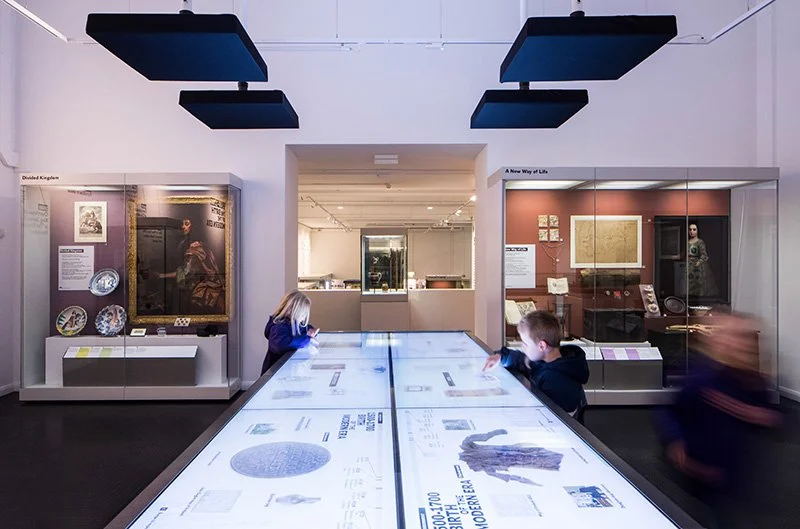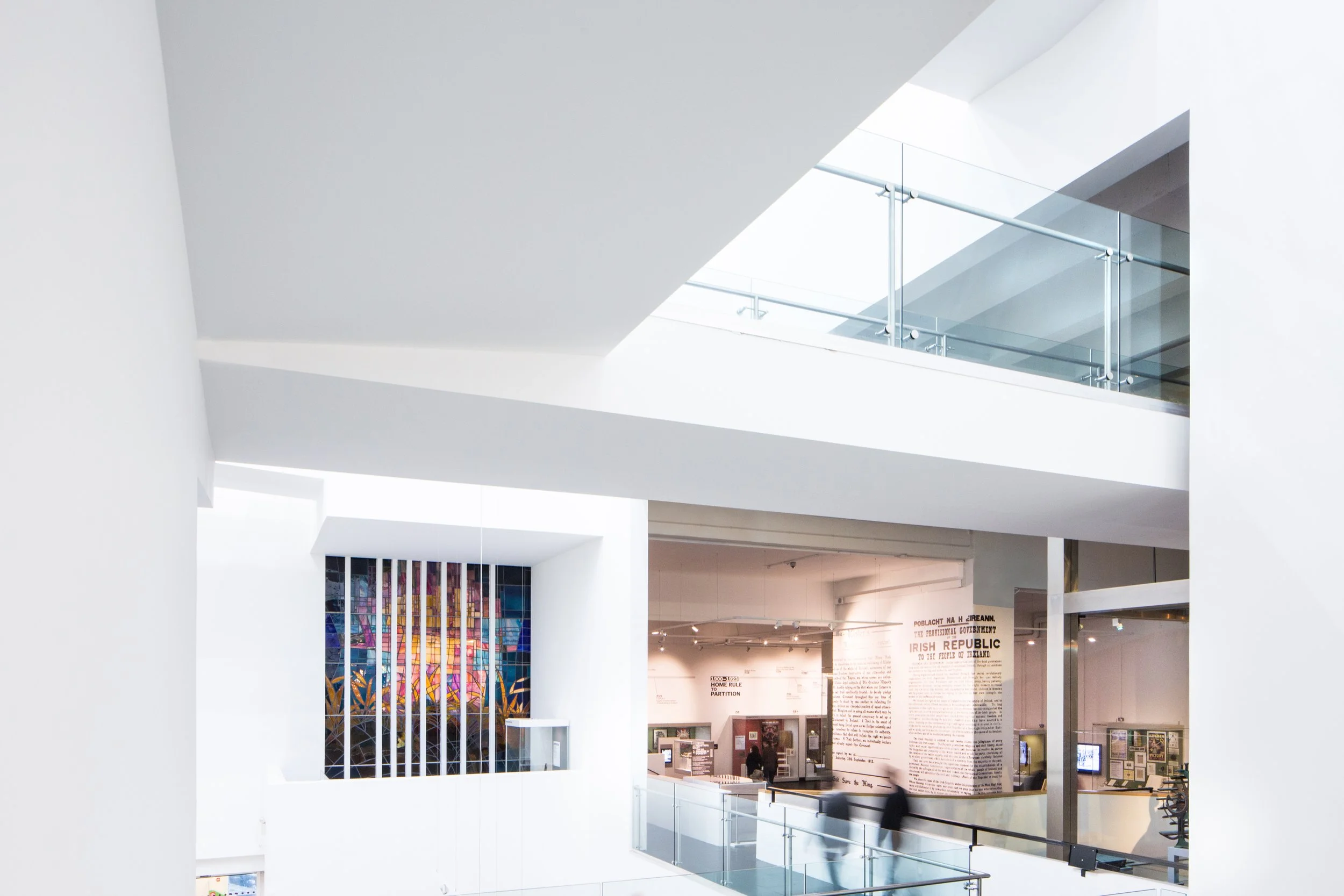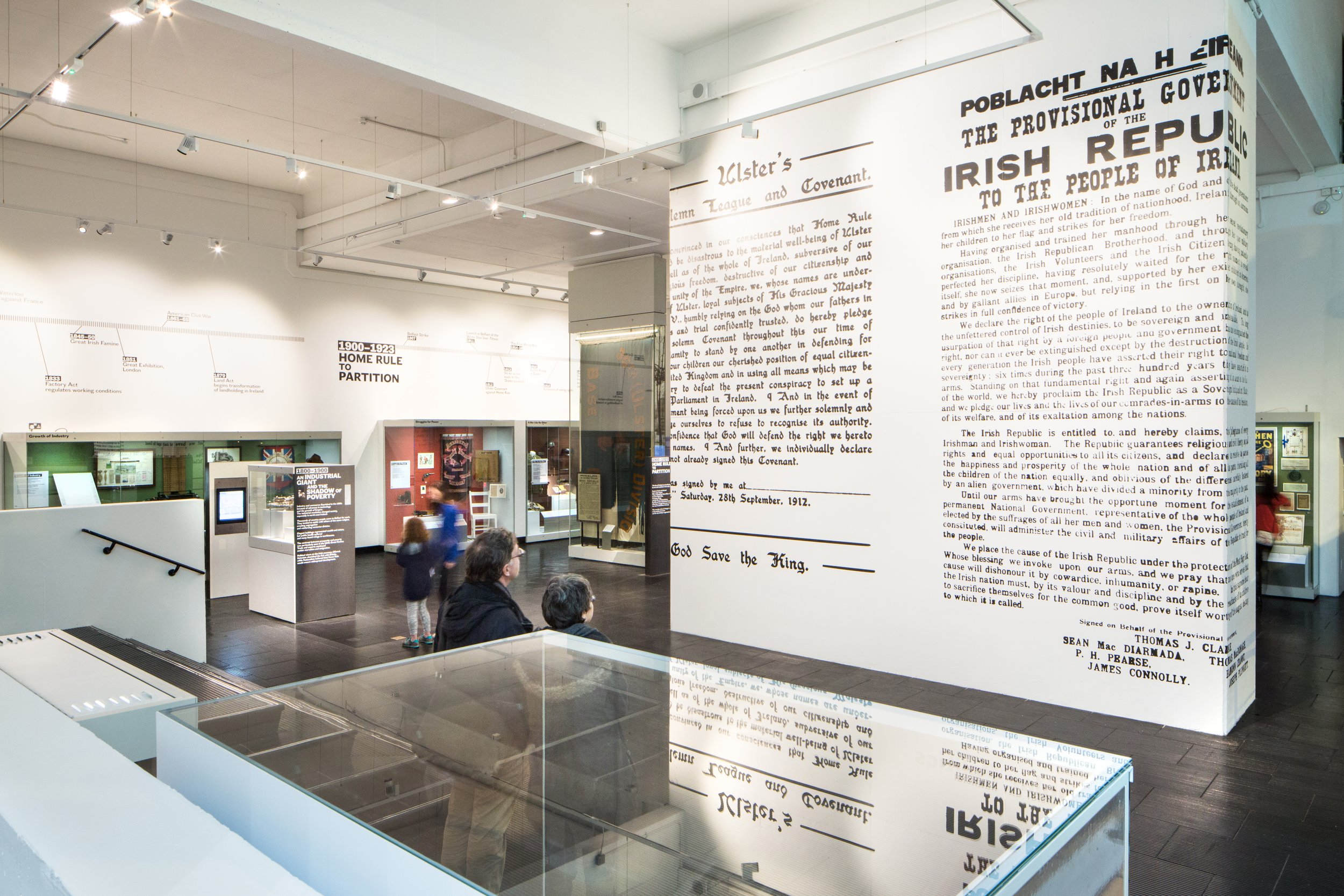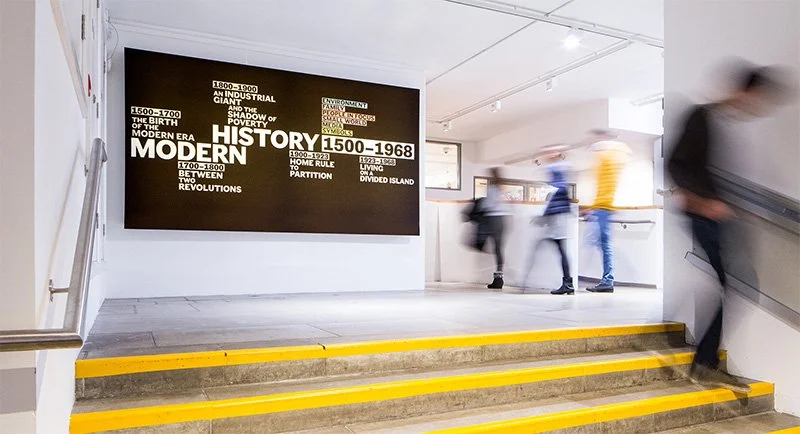Modern History Galleries, Ulster Museum
-
![Two children stand either side of a large interactive touchscreen table exploring its content. Large showcases on both sides of the room display ceramics, artefacts and paintings. In the background, more displays are visible in a second gallery.]()
New permanent museum galleries showcasing 500 years of Northern Irish history.
Ulster Museum, Modern History Galleries 1500–1968, Completed 2014. Photography Donal McCann.
-
![A white building interior with multiple levels. Visitors walk towards a gallery with showcases and exhibits in the background. On the left a blue and orange stained glass window is set in a white wall. Above them is a walkway on the second floor.]()
We were commissioned to redesign the Modern History Galleries in 2013. The Ulster Museum opened in its current location in 1929. A major architectural extension in 1972 designed by Frances Pym was recognised as one of the most important examples of Brutalism in Northern Ireland. The astounding building informed our design approaches.
-
![A visitor reads a text panel in a gallery. Showcases displaying artefacts line a white wall, and above them a large timeline provides key dates between 1800-1923. To the right, a large green flag is displayed in a freestanding case.]()
The existing galleries were not engaging visitors effectively and not meeting access and learning goals. The brief required high-level interpretive planning and high-quality museum design. The project formed the centrepiece of the museum’s strategic plan, itself a cornerstone of the NHLF Decade of Centenaries project.
-
![An exhibition showcase titled “Emerging Industries”. Inside it, a spinning wheel, and teapot and ceramics on a plinth. A blurred figure walks past a doorway on the left. On the adjacent left wall is an abstract blue and orange stained glass window.]()
Our approach involved simplifying the old narratives and gallery interiors. We removed temporary partitions and concentrated on constructing a prominent side wall as a significant architectural intervention. We introduced a large scale graphic timeline to span this wall, which provided a clear structure, supported new themes and made the visitor journey easier to navigate.
-
![Gallery with showcases, text panels and a large timeline running around the top of the room. In the centre, two visitors look at a tall freestanding wall featuring large reproductions of the Ulster Covenant and the Proclamation of the Irish Republic.]()
At the heart of the exhibit, on a central pillar are large-scale reproductions of the Ulster Covenant (1912) and the Proclamation of the Irish Republic (1916). With the deliberate juxtaposition of these foundational documents, we aimed to foster a deeper understanding of the shared histories, similarities and experiences of both communities.
-
![A hand touches an interactive digital display. On screen is an image of a brown tattered shirt titled “Dungiven Costume.” Onscreen options include a timeline of events from 1500-1600s, a 1611 map of Ireland and a video titled “Plantations in Ulster.”]()
A large interactive touchscreen table provides an overview of the galleries. It allows visitors to dive into details and explore video and audio content, archival images and multiple perspectives. The table accommodates multiple users simultaneously. Six flat panel speakers mounted on the ceiling provide localised audio.
-
![Blurred figures walk past the title panel outside the exhibition entrance, at the top of a concrete staircase. The graphics are printed in white text on a large black panel, with the title “Modern History 1500-1968” surrounded by key dates.]()
Our stark graphic approach was inspired by Pym's brutalist architecture, and supported a more structured, decluttered exhibition narrative. Through workshops with the museum team, we established six overarching themes which underpinned the galleries.







